On July 6, 2013, about 1128 Pacific daylight time, a Boeing 777-200ER, operating as Asiana Airlines 214, was on approach to runway 28L when it struck a seawall at San Francisco International Airport. Three of the 291 passengers were fatally injured; 40 passengers, 8 of the 12 flight attendants, and 1 of the 4 flight crew received serious injuries. The other 248 passengers, 4 flight attendants, and 3 flight crew received minor injuries or were not injured. The airplane was destroyed by impact forces and a post-crash fire.
The flight was vectored for a visual approach to runway 28L and intercepted the final approach course about 14 nm from the threshold at an altitude slightly above the desired 3° glidepath. This set the flight crew up for a straight-in visual approach; however, after the flight crew accepted an air traffic control instruction to maintain 180 knots to 5 nm from the runway, the crew mismanaged the airplane’s descent, which resulted in the airplane being well above the desired 3° glidepath when it reached the 5 nm point. The flight crew’s difficulty in managing the airplane’s descent increased as the approach continued.
As the approach continued, it became increasingly unstabilized as the airplane descended below the desired glidepath; the PAPI displayed three and then four red lights, indicating the continuing descent below the glidepath. The decreasing trend in airspeed continued, and about 200 ft, the flight crew became aware of the low airspeed and low path conditions but did not initiate a go-around until the airplane was below 100 ft, at which point the airplane did not have the performance capability to accomplish a go-around. The flight crew’s insufficient monitoring of airspeed indications during the approach resulted from expectancy, increased workload, fatigue, and automation reliance.
When the main landing gear and the aft fuselage struck the seawall, the tail of the airplane broke off at the aft pressure bulkhead. The airplane slid along the runway, lifted partially into the air, spun about 330°, and impacted the ground a final time. The impact forces, which exceeded certification limits, resulted in the inflation of two slides within the cabin, injuring and temporarily trapping two flight attendants. Six occupants were ejected from the airplane during the impact sequence: two of the three fatally injured passengers and four of the seriously injured flight attendants. The four flight attendants were wearing their restraints but were ejected due to the destruction of the aft galley where they were seated. The two ejected passengers, one of whom was later rolled over by two firefighting vehicles, were not wearing their seatbelts. The NTSB determined that both would likely have remained in the cabin and survived had their seatbelts been worn.
After the airplane came to a stop, a fire initiated within the separated right engine, which came to rest adjacent to the right side of the fuselage. When one of the flight attendants became aware of the fire, he initiated an evacuation, and 98% of the passengers self-evacuated. As the fire spread into the fuselage, firefighters entered the airplane and extricated five passengers who were injured and unable to evacuate. One later died. Overall, 99% of the airplane’s occupants survived.
On June 28, 2017 I launched our sister channel “What You Haven’t Seen,” introducing the world to the full-length surveillance video showing the crash of Asiana 214 at SFO.
On January 28, 2020, I posted the helmet camera footage to this channel. It’s time for the lesser-known heroes of the day to get recognized: the people who answered the phones.
Follow us on Twitter @realworldpolice
~~~
It was widely reported that the San Francisco Fire Department banned helmet cameras after this footage came to light. That is incorrect. A ban existed prior. The move’s optics were certainly poor, but the supposedly reactionary ban was in fact the reiteration of a policy that already existed.
~~~
Regarding the lawsuit brought by the family of Ye Meng Yuan, it settled in August 2015 with a public statement that “The parties have reached a confidential settlement on mutually agreeable terms.” California cities are not allowed to enter into confidential settlement agreements, so I got a copy.
The truth? The settlement was for $0 and the City did not admit fault. The available evidence appears to indicate that Yuan was already dead when she was run over. Particularly notable is the absence of foam and dust from her lungs, indicating that she never inhaled those materials. That does not excuse running over a body, but it is reality.
~~~
I want to be transparent about the source material I relied on in forming my conclusions about Asiana 214. With the exception of video, all of that material is posted at https://rwp.yt/asiana.
~~~
https://rwp.yt/join
/r/realworldpolice
@realworldpolice
@What You Haven’t Seen
** (Disclaimer: This video content is intended for educational and informational purposes only) **

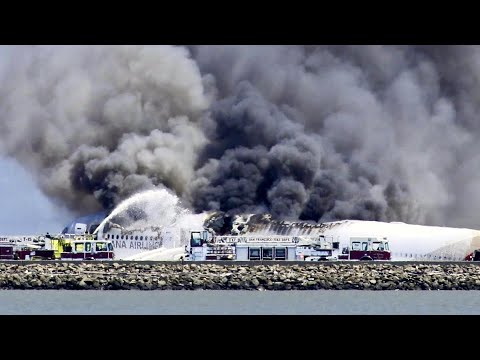
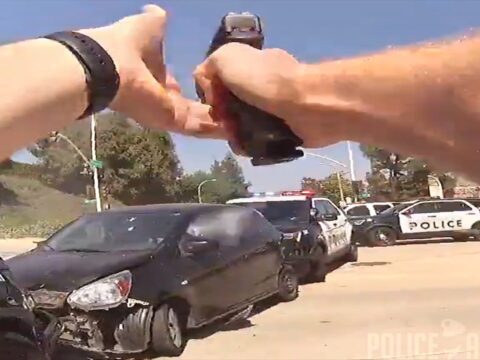
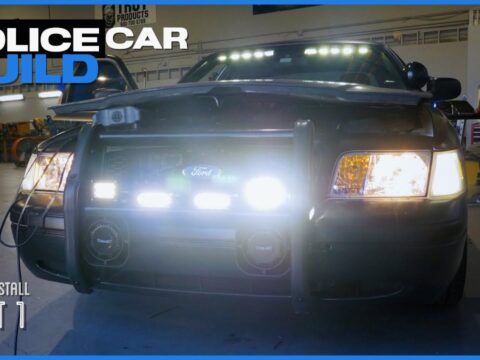
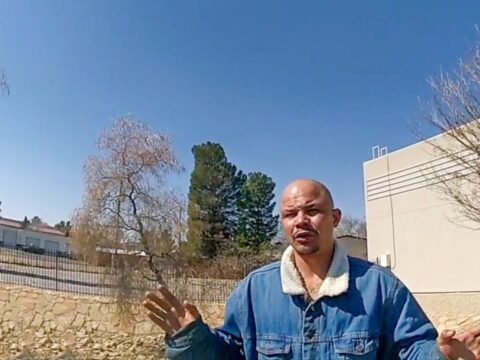
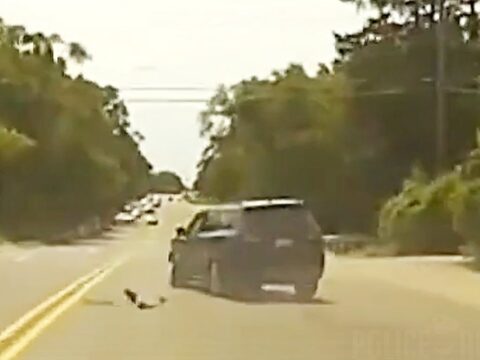


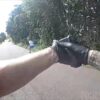
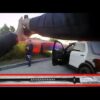




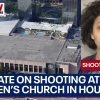


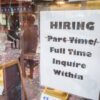


![Suspects for Robbery/Carjacking in the 1st District [VIDEO] – Blotter](https://www.phillynewsnow.com/wp-content/uploads/2021/12/Robbery-Carjacking-2200-S-20th-St-DC-21-01-020533-100x100.jpg)
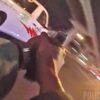
On June 28, 2017 I launched our sister channel @WhatYouHaventSeen, introducing the world to the full-length surveillance video of the Asiana 214 crash. That video is at rwp.yt/asianacctv.
On January 28, 2020, I posted Battalion Chief Mark Johnson's helmet camera footage to this channel. It's at rwp.yt/helmetcam.
It was widely reported that the San Francisco Fire Department banned helmet cameras after this footage came to light. That is incorrect. A ban existed prior. The move's optics were poor, but the supposedly reactionary ban was in fact the reiteration of a policy that already existed.
I am copying the pinned comment from the helmet camera video below, because it contains important information:
Many of the comments here reflect a fundamental misunderstanding of mass casualty incidents. In mass casualty situations the number of patients and the severity of their injuries exceed the capabilities of the available resources and staff. Patients who have the greatest chance of survival with the least expenditure of time, equipment, supplies, and personnel must be managed first. The basic concept of conventional triage is to do the greatest good for the individual patient, but that doesn't work during disasters. The objective of disaster triage is to do the greatest good for the greatest number of people.
To unfairly wrap many the shortcomings of the emergency response into a single issue, it's that the FAA hadn’t adequately planned for a large airliner crash with a significant number of survivors. Firefighters were trained to not move the bodies of deceased passengers and to preserve the scene for accident investigators. The suggestion that firefighters might be running into a burning 777 to extricate living passengers, or that they would be attempting to treat hundreds of survivors, was not a realistic possibility. And then it happened.
When Asiana 214 crashed there were hundreds of injured people, five trapped people, a handful of firefighters, and a potentially explosive plane – which was on fire and leaking jet fuel. Still with people inside. That's what was going on when firefighters didn’t take time to mark the location of someone who by all accounts appeared to be — and who all evidence that I know of indicates was — dead.
In the aftermath of this accident the NTSB was unable to find any guidance or training that addressed either (a) task prioritization, or (b) how ARFF personnel should deal with the seriously injured or deceased in the immediate vicinity of an accident airplane. While the events seen in this video were happening there were dozens of people in need of (and receiving, to a large extent) immediate medical intervention so they wouldn't die, and hundreds more who were less-severely injured but still in need of medical care. Dead people, unfortunately, stay that way. And when there are living people trapped in a burning plane, someone outside of that plane who appears to be dead needs to wait.
It's awful that someone was run over and there were many lessons learned from this accident. Also, the emergency responders generally did an excellent job. Those are not mutually exclusive.
Regarding the lawsuit brought by the family of Ye Meng Yuan, it settled in August 2015 with a public statement by the family's attorney, indicating that "The parties have reached a confidential settlement on mutually agreeable terms." Unfortunately for the attorney, I was aware that California public bodies cannot enter into confidential settlement agreements. So I got a copy. In reality, the settlement was for zero dollars. The lawsuit was dropped, and the City of San Francisco did not admit fault. The available evidence appears to indicate that Yuan was already dead when she was run over. Particularly notable is the absence of foam and dust from her lungs, indicating that she never inhaled those materials. That does not excuse running over a body, but it is reality.
~~~
I want to be transparent about the source material I relied on in forming my conclusions about Asiana 214. With the exception of video, all of that material is posted at rwp.yt/asiana.
~~~
Twitter — @realworldpolice — https://www.twitter.com/realworldpolice
Reddit — /r/realworldpolice — https://www.reddit.com/r/realworldpolice
Patreon — rwp.yt/join
WYHS — rwp.yt/wyhs
I regret watching that video from the firefighter's POV when they ran over that poor girl covered in the fire suppressant. Really sad.
Absolutely disgusted by the media calls, they're complete vultures.
Thanks for uploading this;
The first Emergency Response interagency coordinated plan we created at SFIAKH was called BUILDING 1000
Just a little trivia for you.
Prior to that which we started in the late 1970's early 80's , there was no coordinated plan. It's interesting to see how they have evolved in communications., started by a hand full of us ( Stewardesses, pilots and fireman).â¤âœˆðŸ‡ºðŸ‡¸ðŸ™
Holy crap those reporters are savages. I’d be going crazy getting 40 phone calls from news stations
The amount of press calling dispatch taking up their time during an emergency pisses me the fuck off
14:45 The conversation randomly cuts to a supervisor calling in about a passenger with a SINGLE .22 caliber bullet. I'm surprised she didn't just say "I don't care" and then hang up lol
Ho lee fuk, Sum ting wong, Wi tu lo(Bang Ding Ow).
Look up KTVU airline pilots names 😉
Holy crap that’s a hard job.
At 1440. Do we know anything about the round of ammo they found on a passenger?
Lol the employee that called in and then said they don't want to come in … Savage
0:38 no shit its a actually crash u think we joking wtf?
I admit I want to slap the media callers. Vultures. 🤬 Gotta break that story first to make that money. 🙄 As if these awesome people manning the phones don't already have their hands full managing a tragedy of this magnitude. I loathe, LOATHE, the corporate media. 🤮
Is it possible the person who got ran over by the fire truck had a mask on like the ones that drop down while in the plane??? Maybe that's why they didn't find foam in the lungs. Wish I knew how big the particles are and how easy or hard it would be to find in lungs.
media is horrible like Vultures flying over a road kill, and clogging up the phone lines.
How do you ppl sleep at night
7/10 airlines crashes are targeted kills.
And this is why airports and their surrounding agencies have yearly drills and exercises to go over the worse case scenarios like this and how to handle it flawlessly. These guys done an incredible job!
Where’s the hot drunk college girls??? Cmon RWP… don’t stop being creepy now
It's a miracle that everyone aboard didn't die in that horrific crash and sympathy for those who did. One thing that greatly disturbed me was the hoard of press/media that was taking up valuable time and tying up the phone lines with their incessant calls!